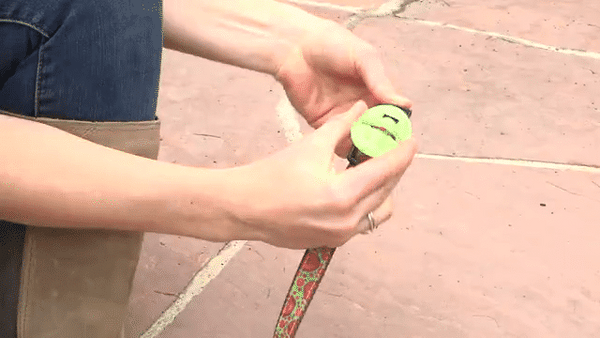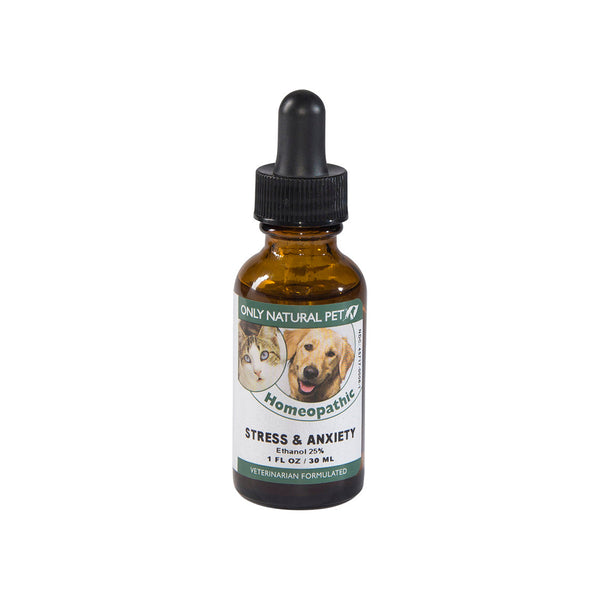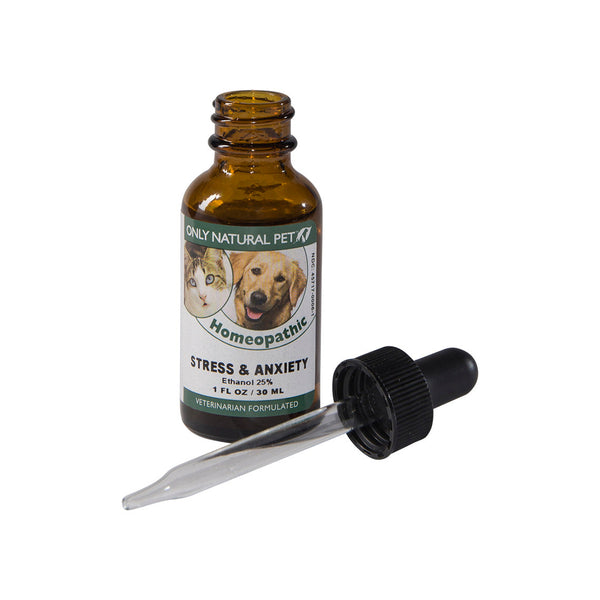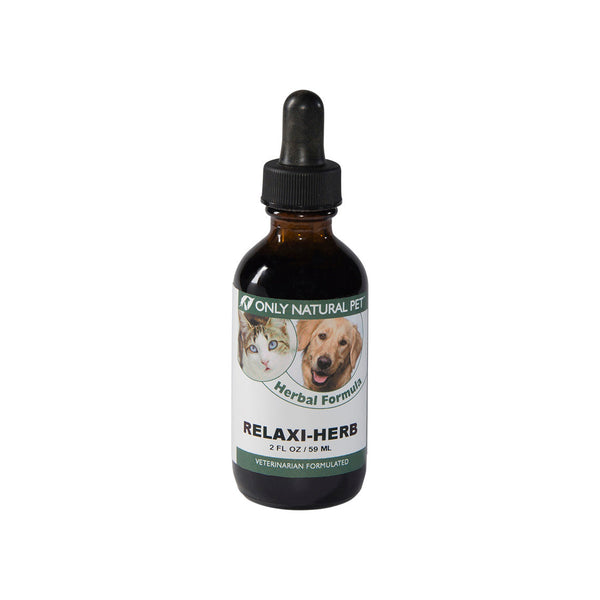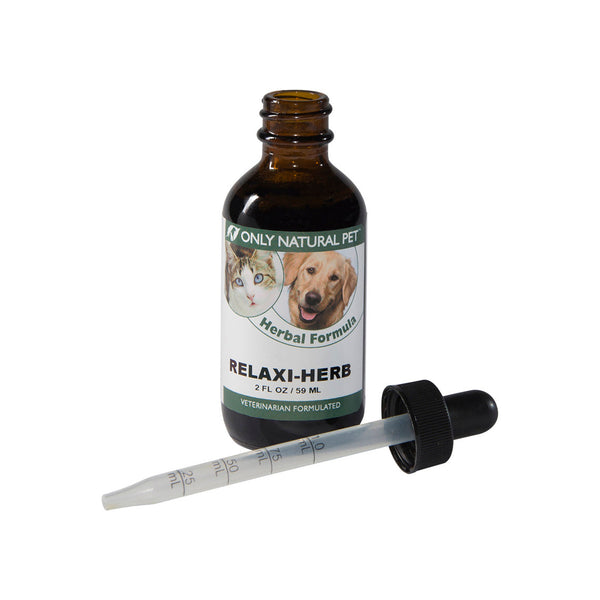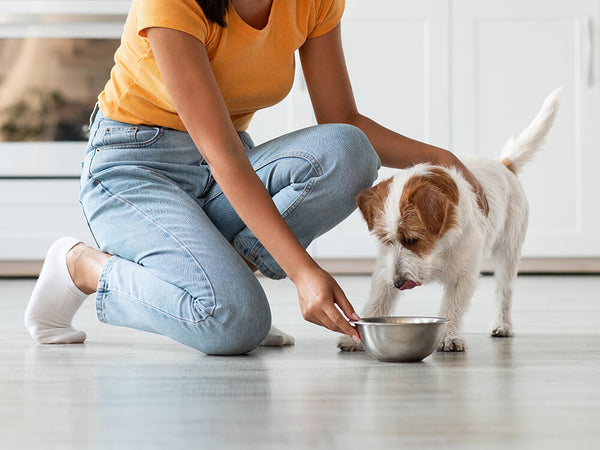A Guardian's Guide to Controlling Canine Biting Behavior
Written by: Only Natural Pet Team
Why Do Dogs Bite?
Many factors, including a dog's early experiences and heredity, can play a role in biting behavior. In almost all cases, it is due to lack of socialization with humans and other dogs, or lack of leadership and poor training about boundaries and territory. Some dogs have a fearful nature, which can be made worse by lack of leadership in their relationship with their pet parents. This lack of leadership, along with absence of socialization and established boundaries can create fearful, unpredictable and, at worst, aggressive behavior in our canine friends.
Dog bite statistics are alarming, with over 4.5 million people bitten in the US per year, but many people don't realize that about half of all dog bites are received by the family dog. If your dog has aggressive tendencies and displays behaviors such as running the fence or barking at strangers, or has a habit of playing too roughly or guarding toys, you owe it to both yourself and your dog to monitor and redirect such behaviors.
You can help your dog to channel biting urges, to become more socialized, and to learn the rules of play and good behavior. With your leadership, your dog can become a peaceful and solid member of our human/canine communities.
Curbing Puppy Biting Behavior
Play Without Encouraging Biting
While it may be fun to play rough and tumble games with your puppy, it's not a good idea to allow disrespectful biting to be a part of that play. In the dog world, biting is often used to gain domination and control (as well as being part of most play).
Dogs like to have rules and boundaries, so you can actually tell your dog or puppy, "No hard biting." If they do bite hard, you can "yelp" to let them know that it hurt. When training a puppy this way, teaching soft play biting is a good idea.
After you have made it clear that there will be no rough biting, if your puppy makes a mistake by aggressively grabbing or jerking a toy from your hand, it's time to stop the play session. Remove the toy from your dog's possession for a time out, while you, as the leader, project and say something like, "Remember, I said no biting. Now you've lost your privilege of playing with this toy." Then walk away.
Of course, you need to refrain from behavior that would encourage biting, such as yanking a toy aggressively from your puppy's mouth, or playing rough tug of war. Both of you need to follow the rules and respect the other's boundaries.
You, as leader, need to be aware of the activities, toys, and games that could potentially stimulate excited biting from your dog and look for the earliest sign of "pre-biting behavior" so that you can intervene before the biting behavior has been activated.
Interspersing "waiting" commands and taking breaks during play time can be very beneficial for everyone and emphasizes your leadership role.
Encourage Constructive Chewing
Especially for puppies, it is important to provide safe objects to chew. Teething is a normal part of canine development, and your pup will find an outlet for the urge to chew if you do not provide one.
Providing safe objects, like natural chew treats to chew can help curb the biting urge during play. There are many safe, natural options available to provide satisfaction for biting urges.
Chew toys can also help satisfy this urge, but be sure to supervise your dog with new toys and remove any toy that becomes damaged. Fabric, plastic, and other materials can cause bowel obstruction if your dog swallows them, so be sure to keep an eye on chew toys and check them regularly for damage. If you've suspected your dog has ingested part of a toy, call your veterinarian.
Older dogs, especially high energy, active dogs will also appreciate having safe objects to gnaw on, which can help curb frustrated energy that can lead to biting behavior.
Expose & Socialize Your Puppy
A great way to prevent puppies from developing fearful behavior is to expose them to a wide variety of other people and animals when they are still young. Taking your dog to the dog park, on puppy play dates, to the local pet store, and simply walking around the neighborhood and greeting other people and dogs will help your dog learn to accept others as part of their world.
Especially with dog breeds that have guarded or suspicious tendencies by nature, it's important to let them meet people of different gender, age, shape, size, and appearance in order to learn that all people are okay. Dogs, and puppies especially, can quickly learn to celebrate diversity.
Fearful aggression can often be completely eliminated in young dogs with broad socialization like this. With older dogs that display mild fears, you may be able to reduce anxiety by using reward training to reinforce good behavior when meeting new people.
Natural calming aides can be helpful for taking the edge off, allowing your dog to feel a little peace without being sedated. Make sure you administer before you go for your walk.
Leading Your Dog into Adulthood
Respect & Cooperation
Respect is one of the most important keys to achieving success in setting rules and boundaries. Consistency is extremely important, especially with puppies. If your expectations, behaviors and requests for cooperation are fair and consistent, your dog will be more responsive and ready to meet your requests, and will have a lot of respect for you, as well.
Since biting is often an excited behavior, encouraging calm, receptive behavior in all situations and settings will go a long way toward channeling and redirecting unwanted biting behavior. Cooperation equals structure for a dog, and builds response potential across the board, and of course, respect. Asking your dog to cooperatively wait before eating, while playing, when getting ready to go for a ride, going in and out of the house, or going for a walk are all ways for your dog to learn calm self-control.
Boundaries, Possessiveness & Territorial Aggression
A major factor that contributes to biting behavior is your dog's concept of territory, especially the behavior that is allowed to protect this territory. Ownership definitely carries status with canines and the concept of ownership can be applied to doors, fences, rooms, furniture, people, and even other dogs as well as toys, socks, shoes, etc.
Making the distinction that everything belongs to you with your dog will curb this behavior. The fence, the yard, and everything in the house, including all dog toys, belong to your. This reduces the possibility that your dog will develop aggressive posturing or behaviors around toys or sticks.
To discourage possessiveness, encourage your dog to release toys while you are playing a game, either by dropping the toy at your feet, putting the toy into your hand or dropping it into a bucket! Give each toy a name so that you can direct your dog to find, get and bring the desired article.
Advanced retrieval work involves having your dog help you around the house or yard by asking them to get your shoes, carry the mail, bring garden tools, etc., and is a great way to positively channel their oral tendencies.
By extending your ownership to everything in your environment, you can curb territorial aggression toward strangers and other dogs as well. For example, since the fence belongs to you, your dog won't be as inclined to bark at neighboring dogs. When it does happen, simply tell your dog (from inside the house), to move away from the fence.
If your dog is exhibiting territorial behavior with an item, like a toy or piece of clothing, you can follow a twofold strategy. Begin by requesting cooperation from your dog regarding walking on leash and basic commands. Gaining cooperation and establishing leadership is a simple way to assert your leadership role. From there, have your dog sit and watch while you or friendly repeatedly pick up the toy. Try this for 15 minutes. Practice this exercise often, letting your dog know the toy is yours, and they can play with it when you allow them to.
Psychological & Physical Factors
Fear Biting
While some dogs are inclined to be fearful or shy by nature, others may develop fearful behavior in response to traumatic events. Both types of fearful dogs are more likely to bite when their guardian fails to demonstrate strong leadership.
Dog society is deeply hierarchical, and when their humans fail to act as leaders, even fearful dogs may feel compelled to step up and lead the pack. It's important to be a strong leader, especially if your dog is fearful, so let your confidence and authority guide your dog's behavior.
Even dogs that are normally terrified in strange situations will, when given a structure within that environment, be much more stable and calm. This is especially true for working dogs. Simply taking charge, expecting cooperation, and asking your dog to firmly but gently do things is a great way to success. Not only will this make things easier for you, but gradually your dog will become more confident and proud.
When taking your dog into a store or public place, using the "heel" command before going in, is a great way to keep your dog at your side side and help them remain relatively calm. Holding a sit or down position quite easily with this leadership structure in place is also helpful.
These same principles can also work for dogs that are mouthy and try to get attention or dominate by biting on the leash or your clothing. This is disrespectful behavior! Focus, cooperation, consistency, and structure can do wonders to redirect behavior, including biting!
Health Examinations & Injured Dogs
Another area where biting can become an issue is when your dog is injured or needs to take medication, have teeth cleaned, nails trimmed, or eyes wiped. It's important for you or your vet to be able to look in your dog's ears and mouth and examine their paws at any time.
A lot of dogs are resistant to having their paws examined or touched at all. In this event, ask the dog mentally, "What if you were hurt? I would need to look at your paw to be sure you were ok, so please give me your paw now so that I can look at it!" This helps put your mind in the right, calming place to help the dog calm down as well.
If the dog resists, insist, and say, "You have GOT to give me your paw. I'm just going to look at it, so please give it to me right now."
For dogs that are extra-sensitive or resistant, try projecting, "Oh my gosh! I'm only going to LOOK at your paw, but I need to hold it. I promise it won't hurt." Then stay there until they look back and touch and/or hold the paw, if even for a very short time.
During these interactions, any mouthing, snapping or nibbling from the dog is discouraged verbally with "No biting." Don't move away, but turn the back of your hand toward the dog's mouth if there is some possibility of a bite. As soon as you're am able to touch the paw, even for a brief moment, express deep appreciation for the trust. "That's right. What a good dog." Strong request for cooperation reflects your compassionate leadership role in this interaction.
Of course, handling an ill or injured animal puts anyone at risk for a dog bite. Even your own dog may be in extreme pain or be disoriented and could bite you when under extreme stress. Be prepared for dealing with your injured dog by having a muzzle, scarf or bandanna ready to protect yourself in an emergency. A good dog first aid kit should supply instructions on using a homemade wrap as a muzzle, and reference books are available for more detailed information. If you are not well versed in canine first aid, it is best to call for professional help if you encounter an unfamiliar dog that appears ill or injured.
Heredity Factors
Some dog breeds have inherited physical and psychological traits that make them more likely to bite people or other dogs, but any dog is susceptible to this behavior. Owner responsibility is key in preventing bites with any breed or mixed breed dog, but strong leadership is absolutely essential so that aggressive tendencies are kept in check.
If you decide to adopt any dog, you must assume responsibility for being the alpha in your household on a 24/7 basis. You must also assume responsibility for socializing your dog and creating an attitude of acceptance toward humans and other canines. Sometimes it can take some extra work, but you owe it to your dog. Plus, your personal relationship will only grow.
Teaching Children to Interact with Your Dog
A final factor that contributes to many biting incidents is interactions with children. Children's natural behavior, especially at play, can invoke some dog's instinctive herding or prey drive and increase the likelihood of a biting incident.
Be sure to supervise your dog with all children and remove your dog if the situation becomes too chaotic or stressful. As a responsible guardian, you are under obligation to teach your dog to respect both your own and other children. Since dogs commonly use biting as a form of correcting young pups and keeping them in line, you must be sure that your dog understands the "pecking order," and knows that children are above them in rank. Likewise, teach your children to handle your dog with care and respect, and as soon as they are able, encourage them to assume a dominant role by directing the dog with appropriate commands to reinforce their status.
Summary on Dog Biting Behavior
Our dogs provide us with companionship, joy and comfort and accept us as we are. They are social animals that we have brought into our lives, expecting them to adapt to our environment, our needs, and our comings and goings. The responsibility we bear as their caretakers is to recognize their social nature, assume our roles as their leaders, and teach them how to be comfortable in our human world. That means socializing our dogs and providing boundaries and guidelines so that they can live in harmony with both humans and other canines.
With your help, your dog can learn to discriminate between acceptable and unacceptable behaviors and become a good canine citizen in your home and out in the world.











